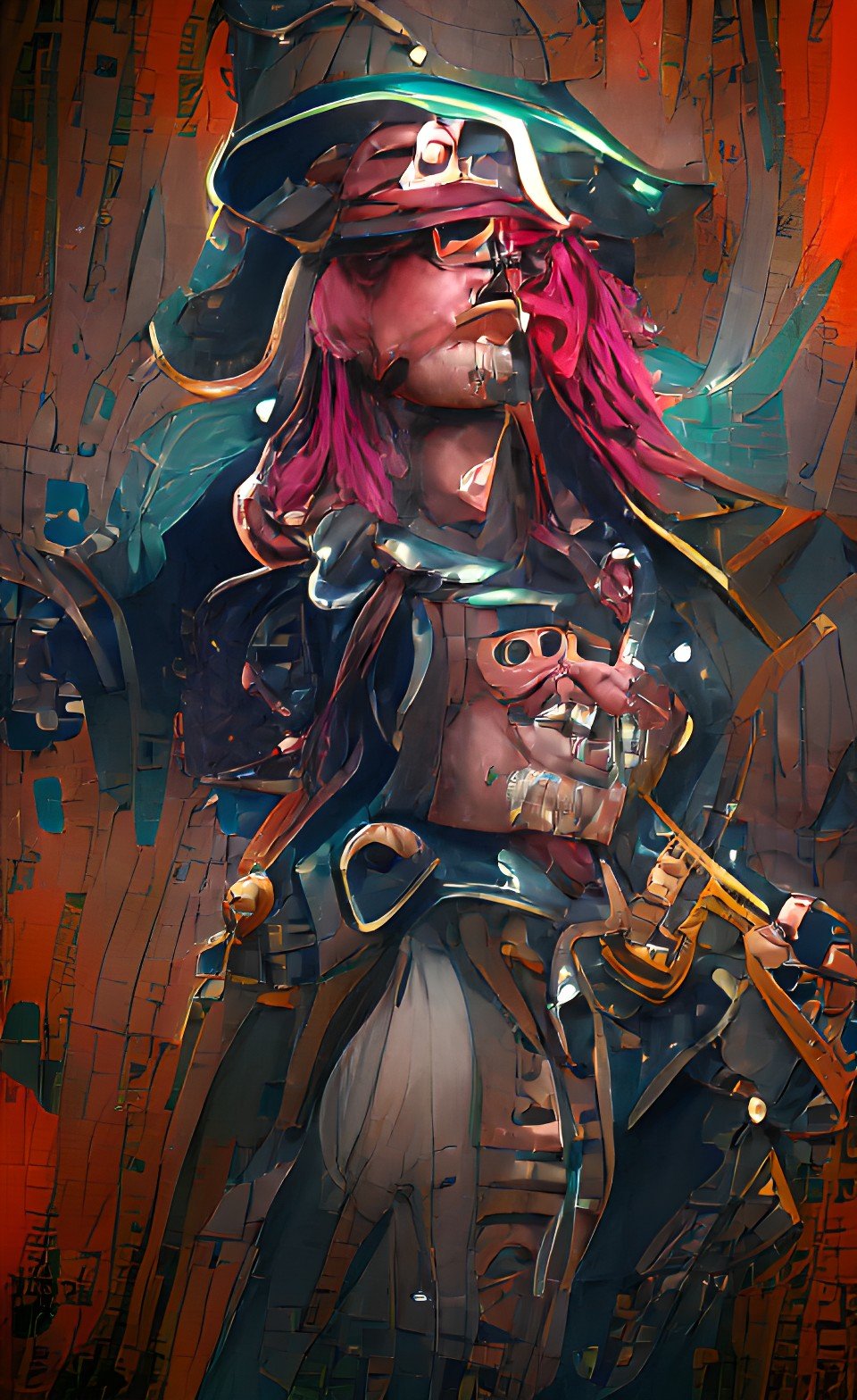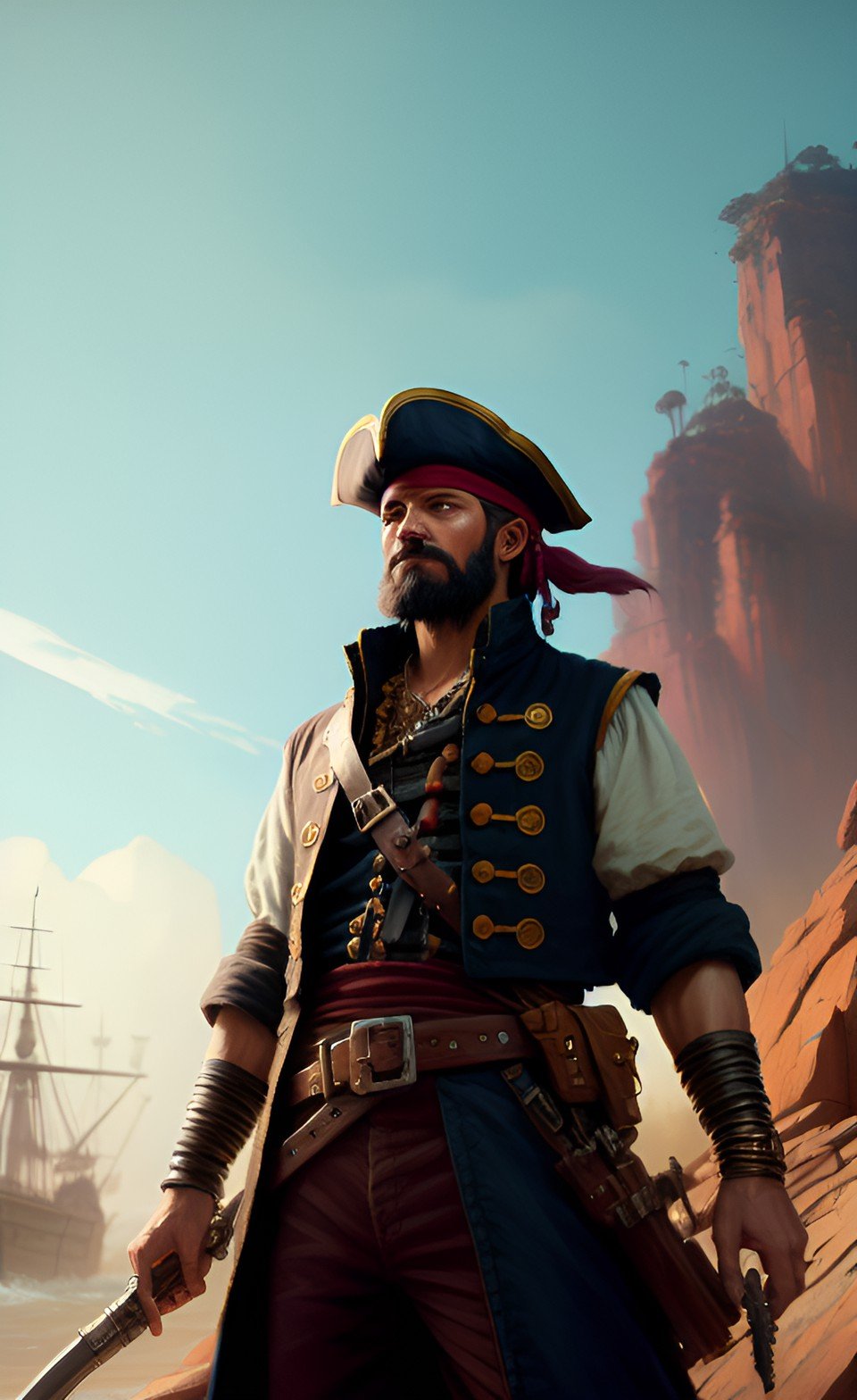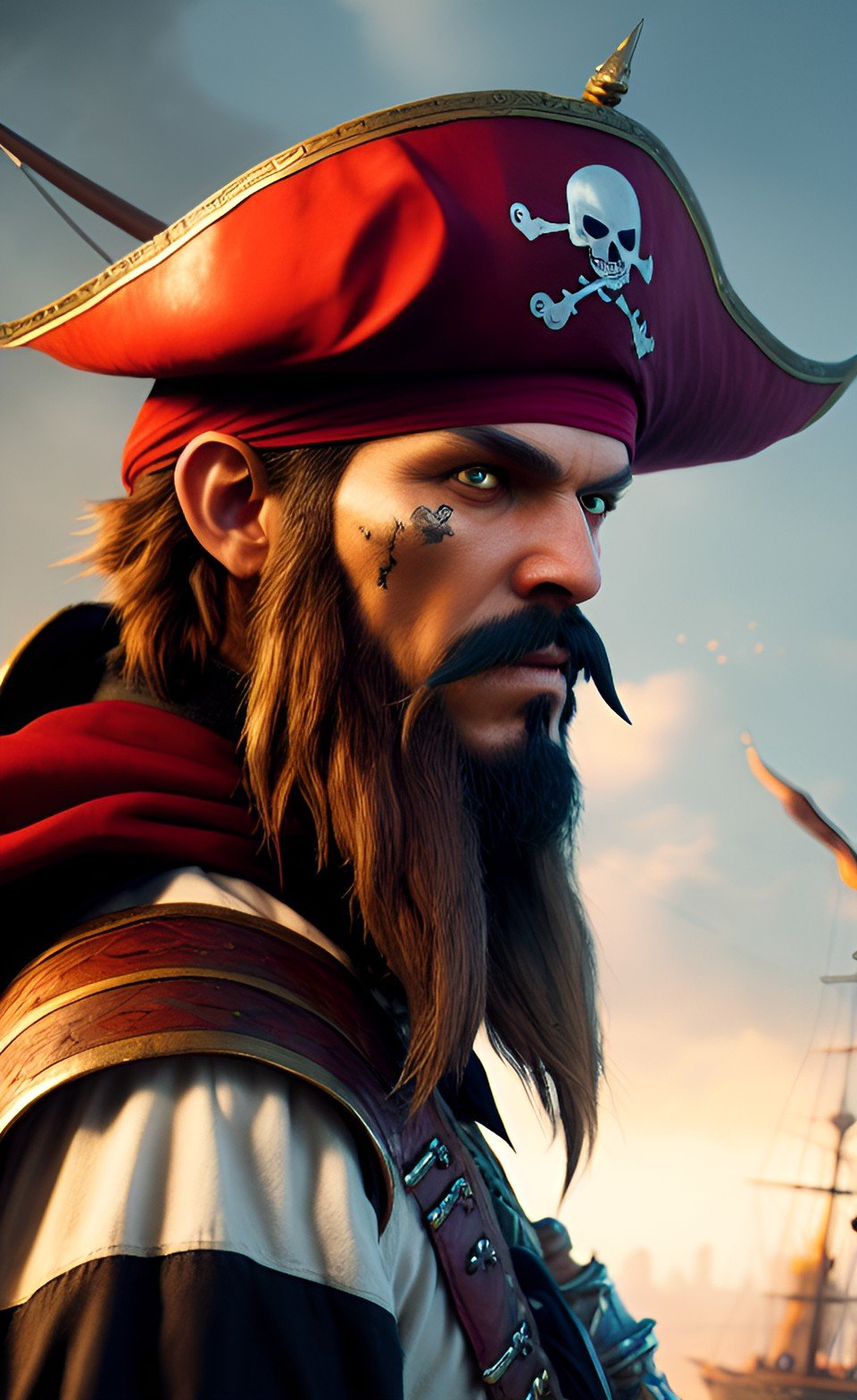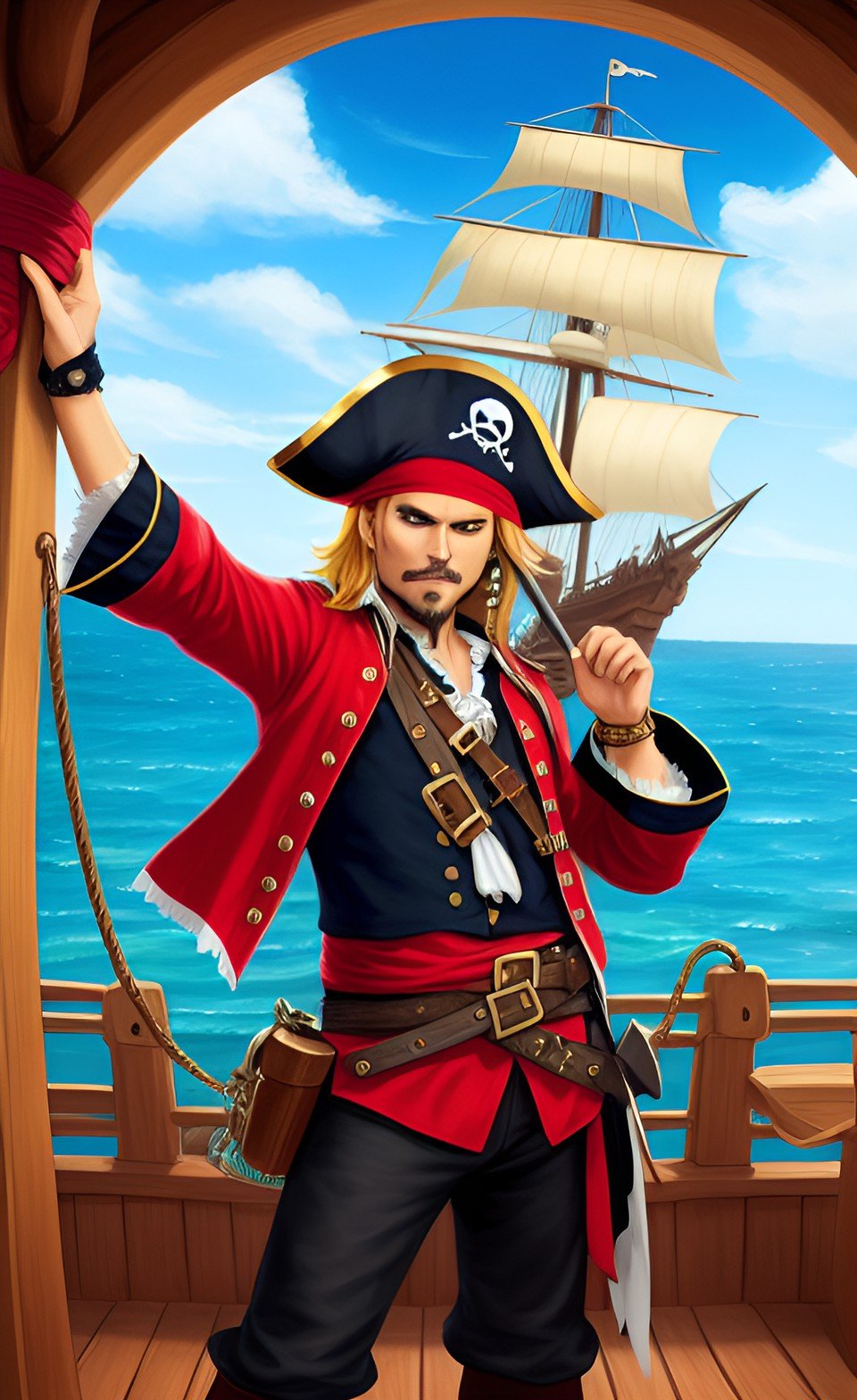
Hi, AI Art folks!
This is my first entry in AI Art on Steem Community and I hope to do everythyng right 😉
So, the topic is Pirates and the rules are here
My main entry is the pic above.
This is a very romantic pirate florist. I also asked the AI to tell its story. I came up with the plot myself, and AI supplemented and expanded it and here's what I found out
Once upon a time in an ancient city, there lived a very romantic florist who loved his flowers more than anything. He was always doing something special for them, whether it was decorating the shop with them or finding them the best food and soil. But one day, disaster struck. A terrible tsunami hit the city and the florist's shop was destroyed.
The florist was determined to save his beloved flowers, so he jumped into the water and started to swim. Unfortunately, the florist was not a strong swimmer and he was soon overcome by the strength of the current. He drowned in the sea, unable to save his beloved flowers.
The florist could not accept such a fate, so he became a pirate on a ghost ship. His love for flowers never died though, so he started to search for them among the ocean depths. To his surprise, he discovered that the underwater world was also full of beautiful plants.
He decided to take on a new identity as a florist pirate and spend his days scouring the seas for these beautiful plants. He would collect them, bring them back to his ship, and arrange them in beautiful bouquets. He would then deliver these bouquets to ports all around the world, making a living as a florist pirate.
And so the romantic florist continued to bring beauty and joy to people everywhere, all while honoring the memory of his beloved flowers.
All the pics in this post were created with Wombo (https://dream.ai/) 11/03/2023

The competition rules allow to add more entries. I take this opportunity and I also want to speculate a bit about AI and art. As a copyright lawyer, I'm very involved in this topic right now. But as you will see, there are more questions than answers.
Artificial Intelligence (AI) is slowly becoming a part of our everyday lives. From facial recognition to driverless cars, AI is quickly revolutionizing the way we interact with technology. But can works created by AI be considered art?
Copyright law states that only a person can be the author of a creative work. But this is a difficult question to answer when it comes to AI, as AI is a creation of a person, and the works produced by it are the result of a complex set of algorithms. It is almost impossible to prove the authorship of a program, especially if the result is translated into analog form.

There are a few ways to approach this question. The first is to view AI as a tool, and not as an artist. In this case, it is the creator of the AI who is the author of the work, and the copyright would belong to them. The second is to view AI as an artist in its own right, in which case the copyright would belong to the AI itself. This may seem far-fetched, but it is an interesting concept which is being explored by some legal scholars.
The debate around this issue is likely to continue for some time, as technology continues to advance and AI becomes more embedded in our lives. There is no clear answer at this stage, but it is an important issue to consider, as it could have implications for the way copyright law is applied in the future. It is clear that AI has the potential to create works of art, and copyright laws should reflect this. Whether or not we view AI as an artist in its own right is an open question, and one that will require further exploration.

The Internet is a vast and ever-evolving landscape, and as such, it’s no surprise that copyright laws have struggled to keep up. With the rise of digital media and the mass distribution of copyrighted works, copyright enforcement has become increasingly difficult, if not outright impossible. It’s in this context that the concept of copyleft theory was born.
At its core, copyleft theory is a way of allowing people to freely access and share copyrighted works, while still protecting the author’s rights and giving them the ability to benefit from their work. It’s a third way between traditional copyright and the more extreme idea of “free culture” and giving away all rights to copyrighted works.
The concept of copyleft theory is based on the idea of “reciprocity”—the idea that if someone uses a copyrighted work, they must allow others to use it in the same way. This means that if someone uses a work that is copyrighted, they must share it back under the same copyright license. This encourages collaboration and sharing, while still protecting the author’s right to benefit from their work.

One of the main advantages of copyleft theory is that it allows people to use copyrighted works without worrying about legal repercussions. It also encourages creativity, since people can use works to build on and improve, without worrying about being sued. In addition, it allows people to access works that would otherwise be unavailable or expensive, since they are no longer bound by strict copyright laws.
Of course, copyleft theory isn’t a perfect solution, and there are some drawbacks. For example, it can be difficult to enforce the terms of a copyleft license, since it relies on everyone following the same rules. Additionally, some people may be wary of sharing their work due to the potential for misuse.
Still, copyleft theory provides a unique way of allowing people to access and share copyrighted works, while still protecting the original author’s rights. It’s a third way between traditional copyright and the more extreme idea of “free culture” and is gaining momentum as a viable solution in the digital age.
